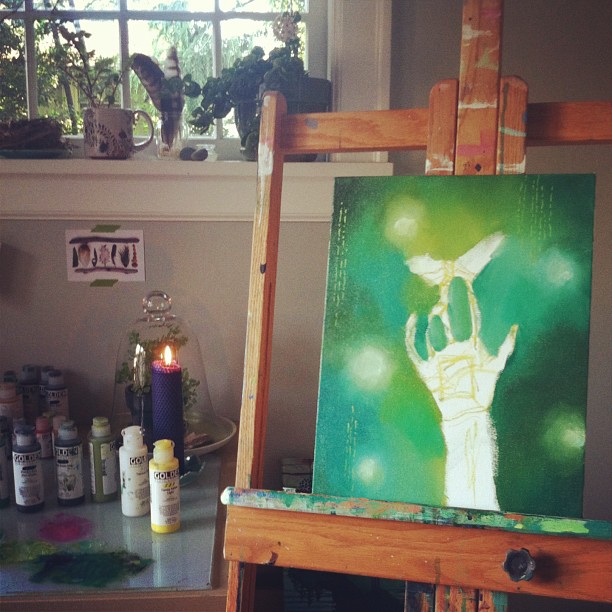The Visual Elements that Stand Tall
Kelly Clark
Happy Friday All! I wanted to talk a bit today on Symbolism, Meaning, and Do We Need It at All. And so I did!
To recap some thoughts on symbolism:
- When we actively work with symbolism in our art, we create layers of meaning. I find it helpful to think in terms of symbols when I want to express a large concept without needing to explain it in great detail - to allow one visual element to stand in for a more complex thought. These can go deep, full of historical meaning, universally recognizable, or they can be utterly simple, light and invented just for us. It can be something as easy as "yellow means happy" or as far reaching as "a feather means connection with the higher spiritual realm."
- The most important thing to remember in this is that symbolism is merely a tool in our artistic tool box - we can use it as we need, we can change it's purpose at any moment (like that moment when a butter knife suddenly becomes a screwdriver), or we can leave it to the side if it does not serve the current pieces we're working on (like that moment you spread butter with your fingers). When we develop symbols, they become a part of our visual vocabulary - much like the map key - and because they are just part of our tools, we have full agency to invent and shift anytime we need. Remember! Artistic polygamy!
- While I spoke primarily in this video on using Symbols (think marks, shapes, specific images, colors), there is no end to the number of visual elements we can use to represent the concepts and meanings we want to express. But a great way to begin exploring what symbols we already have is to look back at our individual inspiration explorations. So many of our big inspirations are rather without a nice, concise picture to explain them, but as we dissect our associations and study them, we can often find symbols that will stand in as representatives.
Home[play] for the Weekend:
I'd like you to spend some time with your sketchbooks continuing to expand on your inspirations, but to really begin looking through them for the various visual elements that can stand in as symbols - especially those inspirations that did not have tidy images already attached. If you had something like "walking in full moonlight" on your list of inspirations, perhaps start asking how you can symbolise that walk (does it look like feet, a foot print, a dotted trail line, a broad stroke of blue, etc), or how you can symbolise that full moonlight (the shape of the moon, the phases, radiating light patterns, a milky yellow or blue color). Remember, not everything needs (or will ever even have) a symbolism! This is merely one more way to compile information and inspiration, one more way to step into telling the story of the work of our hands Start adding these to your sketchbook as potential ways to develop your art!
If you are in the FaceBook group and would like to share your thoughts on symbolism and begin discussing using it in your work, we'd all love to dialogue!
See you next week ladies!
- K



